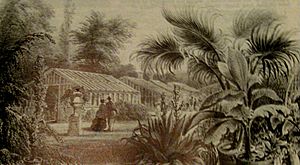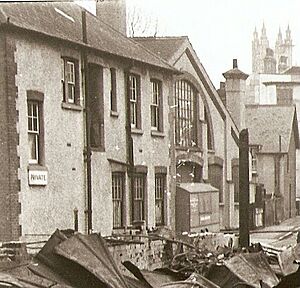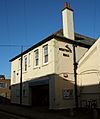Westgate Hall, Canterbury facts for kids
Quick facts for kids Westgate Hall |
|
|---|---|
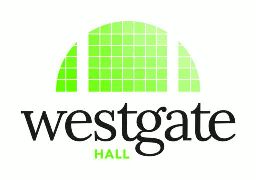 |
|
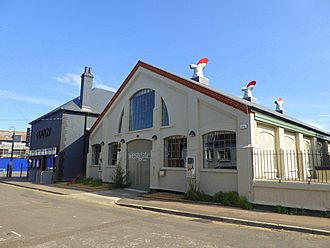
Westgate Hall after renovation, 2016
|
|
| General information | |
| Type | Former drill hall Community centre Entertainment venue |
| Architectural style | Drill hall |
| Location | Canterbury, Kent, England |
| Coordinates | 51°16′54″N 1°04′39″E / 51.28167°N 1.07750°E |
| Completed | 1900 |
| Renovated | 2014 |
| Owner | Westgate Hall Community Trust Ltd |
Westgate Hall is an old building in Canterbury, Kent, England. It used to be a place where soldiers trained, called a drill hall. Today, it's a busy community center. People use it for many different events.
In 2009, the Hall was almost closed down or torn down. But local people worked hard to save it. Now, a group called Westgate Hall Community Trust runs the building. It hosts parties, meetings, markets, and other fun events.
Contents
History of Westgate Hall
Building the Hall
Before Westgate Hall was built, this spot was a big garden. It was called Masters' Exotic Nursery. This garden had special plants and two natural springs. One spring had "chalybeate" water, which means it had iron in it. The other had "mineral water."
The nursery was very large, about 30 acres (120,000 m2). It belonged to the Masters family. In 1896, the gardens were sold off. The last owner was George Mount.
Maps from 1899 do not show the hall yet. But a photo from 1900 does show it. So, the hall was likely built between 1899 and 1900. We don't know exactly why it was built. In its early days, it might have been called St Peter's Mission Hall.
Hall During Wartime
Westgate Hall was used as a drill hall during World War I. This is where soldiers from the Territorial Army trained. It was lucky to survive the bombing of Canterbury in World War II in 1944.
The hall was built very well. It had a fancy tiled roof and large windows. One window even had a beautiful stained-glass panel. Later, a nearby Victorian building was connected to the hall. Its entrance area was updated with a cool Art Deco style. Today, the building is in a special Conservation area. This means it is protected because of its history.
How the Hall Was Used
Military Training Center
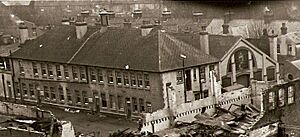
The hall was probably a meeting place for local soldiers even before 1908. From 1908, it was the main base for two companies of soldiers, B and C Companies. They were part of the 4th Battalion of the Buffs regiment. The hall was also the headquarters for another group, the Royal East Kent Yeomanry, in 1908.
An old photo from 1915 shows new army recruits marching outside the hall. In 1920, it became the main office for the 4th Battalion of the Buffs. By 1921, the Royal East Kent Yeomanry had changed into the 385 Battery of the Royal Artillery. People living nearby would often see soldiers marching through the building.
During World War II, the hall was used as a hospital. A famous general, Bernard Montgomery, visited the hall in 1943. The hall was still called the drill hall until the 1970s. Then, the local Council took it over.
Community Gathering Place
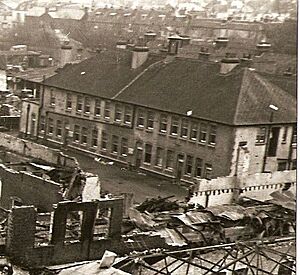
The hall might have been called St Peter's Mission Hall as early as 1903. It was one of the places used for meetings by the Mothers' Union in 1927. It has been a community centre since the early 1970s.
Westgate Hall has a special floor for dancing. It is used by people from Canterbury and students from local universities. The hall also has a bar that is open several hours a week. It is used for many events like fairs and ballroom dancing. It can hold hundreds of people.
Many local clubs and groups use the hall. The University of Kent uses it for students to pick up their graduation robes. It is also a place for important events like Holocaust Memorial Day. The Council uses Westgate Hall to count votes during elections. Sports events, like the finish line for the 2007 Tour de France, have also happened here. People can donate blood here, and groups like Weight Watchers hold meetings. It's also a popular place for concerts and wedding parties.
Memories of the Hall
People have many fond memories of Westgate Hall. One person, born in 1903, remembered going to dances there. He said: "Canterbury was lucky then in that it had a number of halls suitable for public dances . . . I used to go to several dances: in the Drill Hall in St. Peter’s Lane . . . The Drill Hall used to be non-stop. We had a band at each end and it was from 8 to 1 am in the morning. One and sixpence. Strict tempo, waltz, valeta, quick-step. If you went on the floor and you weren’t complying with the music the M.C. would ask you to leave the floor. There was a place for refreshments and a bar upstairs. You could take a girl to a dance, buy refreshments, buy a packet of cigarettes and a tube of Parma Violet Cashews and have change the next morning out of ten shillings."
Saving the Hall
In 2009, Westgate Hall was in danger of closing or being torn down. The Canterbury City Council was going to make a decision about its future. Many people were upset about this. A group was formed to try and save the hall.
Even though the Council first voted to close it, the Westgate Community Trust worked with local people. They fought to keep the hall open. The Trust announced that the Council agreed to keep the hall open until June 2011.
In July 2011, the Council talked about plans from the Westgate Community Trust. They also discussed a cinema company, Curzon Cinema. The idea was for them to lease the hall for the community. On July 27, the Council agreed to let Curzon Cinema and the Trust use the hall. They gave the Trust a 100-year lease, which is a very long time.
Reopening the Hall
In February 2014, the City of Canterbury council, Curzon Cinemas, and the Westgate Community Trust signed the 99-year lease. This officially gave the Hall to the Trust. The building was planned to reopen in November 2014.
The government also helped by giving the Trust a grant of £344,497. This money was used for renovations. In January 2014, the building was closed for these updates. The plan was to make it a cinema with a hall for community use.
Today, Westgate Hall is open and busy. It hosts many local events. These include parties, conferences, markets, and fairs, like the Westgate Hall Market.
Gallery
-
Art Deco entrance hall, in 2010
-
Ladies' powder room on first floor, showing original window frames, 2010
-
1874 map of Westgate showing Welby Square and gardens before Westgate Hall was built


